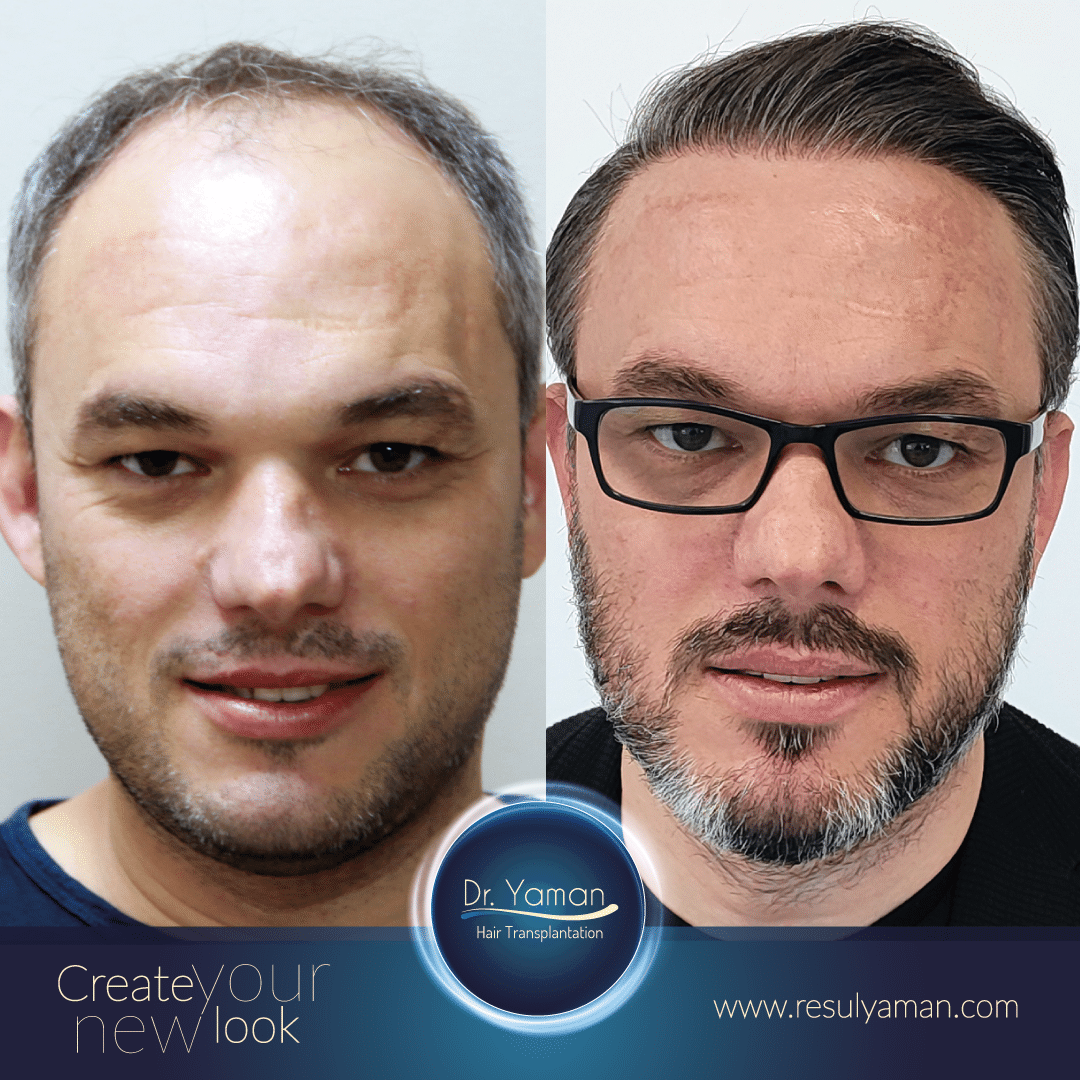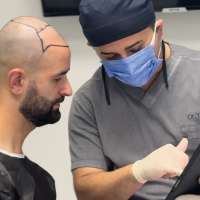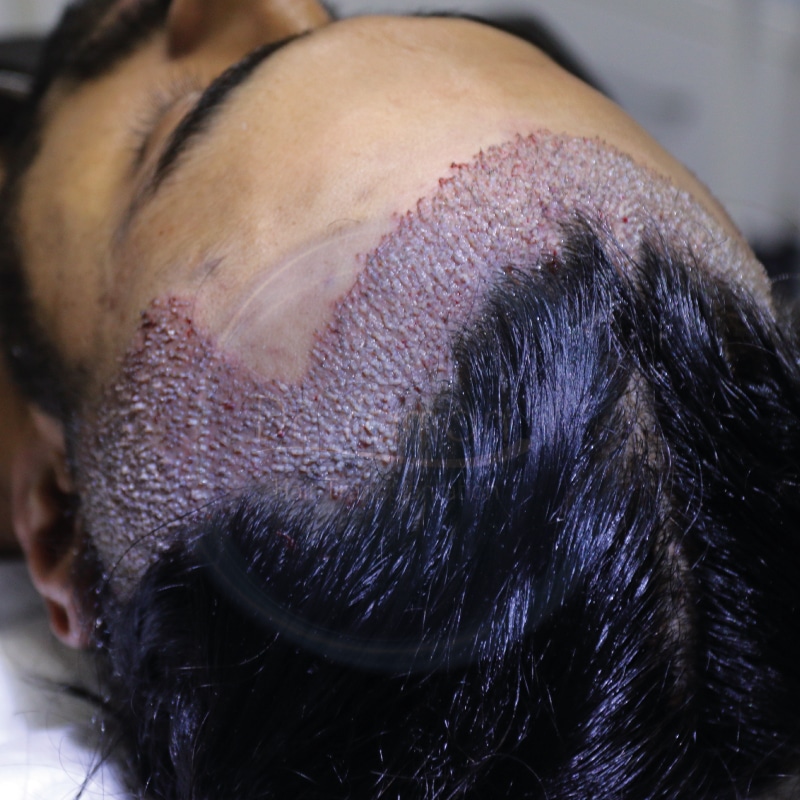If you are feeling a lack of confidence in your hairline and want a solution a hair transplant could be the way forward. This is a type of surgery where existing hairs from your head are removed and re-inserted into the balding or thinning areas of your scalp.
One of the first things you should know when embarking on your hair transplant journey is the different types of surgery available as they have varying recovery times, success rates, and costs. A newer type of surgery that is becoming increasingly common is the DHI hair transplant and in this guide, we discuss what it is, its benefits, and how it differs from FUE hair transplantation.
What is a DHI Hair Transplant?
DHI = Direct Hair Implantation
DHI is a newer type of hair transplant procedure and it is making waves in the industry and steadily overtaking the current most common surgery – FUE (Follicular Unit Extraction).
DHI is based on FUE and still works on the premise of removing individual hair follicles as opposed to physically cutting away skin containing hair like other procedures such as FUT.
During the procedure, the surgeon uses a revolutionary device called the Choi Implanter Pen. This is an incredibly precise and accurate device that allows the surgeon to work quickly and remove hairs efficiently.
The Choi Implanter Pen is then used to transplant the hairs into their new location. This is far less invasive as no channels are required to be cut. Instead, the pen is used to push the hair follicles under the skin like a surgical needle.
Get motivated by our DHI Hair Transplant success stories.
DHI vs FUT vs FUE – What’s the Difference?
So how does a DHI hair transplant differ from the other types of surgeries available? Let’s first look at the difference between the older FUT surgery compared to DHI and FUE.
Follicular Unit Transplantation is an older and less popular method as the surgeon physically cuts a strip of skin from your scalp. Once cut, the hair follicles are then removed. This procedure is generally quicker and cheaper than DHI and FUE surgeries but has several drawbacks.
Firstly, FUT surgeries leave a permanent scar due to pieces of your skin being removed. This will fade over time but it will always be there. Additionally, there may be bumps and the results can occasionally look unnatural. In contrast, both DHI and FUE surgeries do not remove any skin but instead remove only the hair follicles which is far less invasive.
Now, what’s the difference between DHI and FUE? The main difference is the hair extraction and re-implantation method. With FUE procedures, the surgeon manually removes hair follicles so there is more room for human error.
In contrast, during a DHI procedure, the surgeon uses a specialized tool called a Choi Implanter Pen which is also then used to transplant the hairs into their new location on your scalp.
The Choi Implanter Pen has been refined over the last decade and it has an interchangeable end that allows it to perform both the extraction and transplantation. The way that the pen is designed also means that the direction of the hairs can be followed closely and the surgeon has far more control over the process.
Read more about DHI vs. FUE in this in-depth article.
Pros and Cons of DHI Hair Transplants
You should now have a clear idea of how DHI hair transplants work and the main apparatus used that makes the procedure different. But is a DHI hair transplant a better option compared to FUT and FUE? Why should you choose this surgery for your hair loss treatment? We look at the pros and cons of DHI below.
Pros
- Excellent recovery period: Similarly to FUE, DHI offers a fast recovery period and you can expect to be back at work no later than 7-10 days (potentially 2-3 if you work from home!).
- High success rates of up to 98%: Due to the automation and precision of the Choi Implanter Pen, DHI surgeries have a typically higher success rate of up to 98% whereas FUT can be as low as 85%, and FUE 95%.
- Less invasive: The fact that no cutting is required and the Choi Implanter is used to insert the hairs means there is much less trauma on your scalp and the procedure as a whole is less invasive.
- Virtually no scaring: FUT surgeries leave permanent scars that can be more visible and FUE procedures can leave small white scars like dots. In contrast, there is virtually no scarring from DHI procedures.
- Donor hair area not shaven: During FUE surgeries the donor hair area is usually shaved which some people might not like. Oftentimes this is not the case with DHI procedures which helps improve recovery times.
Cons
- Cannot implant as many grafts: Currently, DHI surgeries can be used to transplant 4000 grafts in one session whereas both FUT and FUE can cover more hairs and larger areas than this.
- Generally more expensive: Due to the specialist technology and equipment DHI surgeries can be more expensive compared to both FUT and FUE.
- Better suited for smaller areas of hair loss: The 4000 limit of the Choi Implanter Pen means that DHI hair transplants are usually best suited for smaller patches of balding and receding hairlines whereas FUE can be used to treat a much larger area of your scalp.
Check out the results of some of our DHI hair transplants.
DHI Continues to Push the Boundaries of Hair Transplant Surgery
A DHI hair transplant is certainly a viable option and as you can see from the above it offers many benefits compared to other surgeries like FUT and FUE.
The fact that the transplants are taken using the Choi Implanter pen makes a huge difference and removes the potential for manual errors by the surgeon. You also get the benefit of faster recovery times and virtually indetectable scars.
If you are unsure which type of hair transplant would be suitable for your hair loss problem it is always advisable to book a free consultation with a qualified surgeon who can help steer you in the right direction.
 WhatsApp
WhatsApp Get Mail!
Get Mail!
 English
English Italiano
Italiano Español
Español Türkçe
Türkçe Português
Português Français
Français Deutsch
Deutsch عربي
عربي






